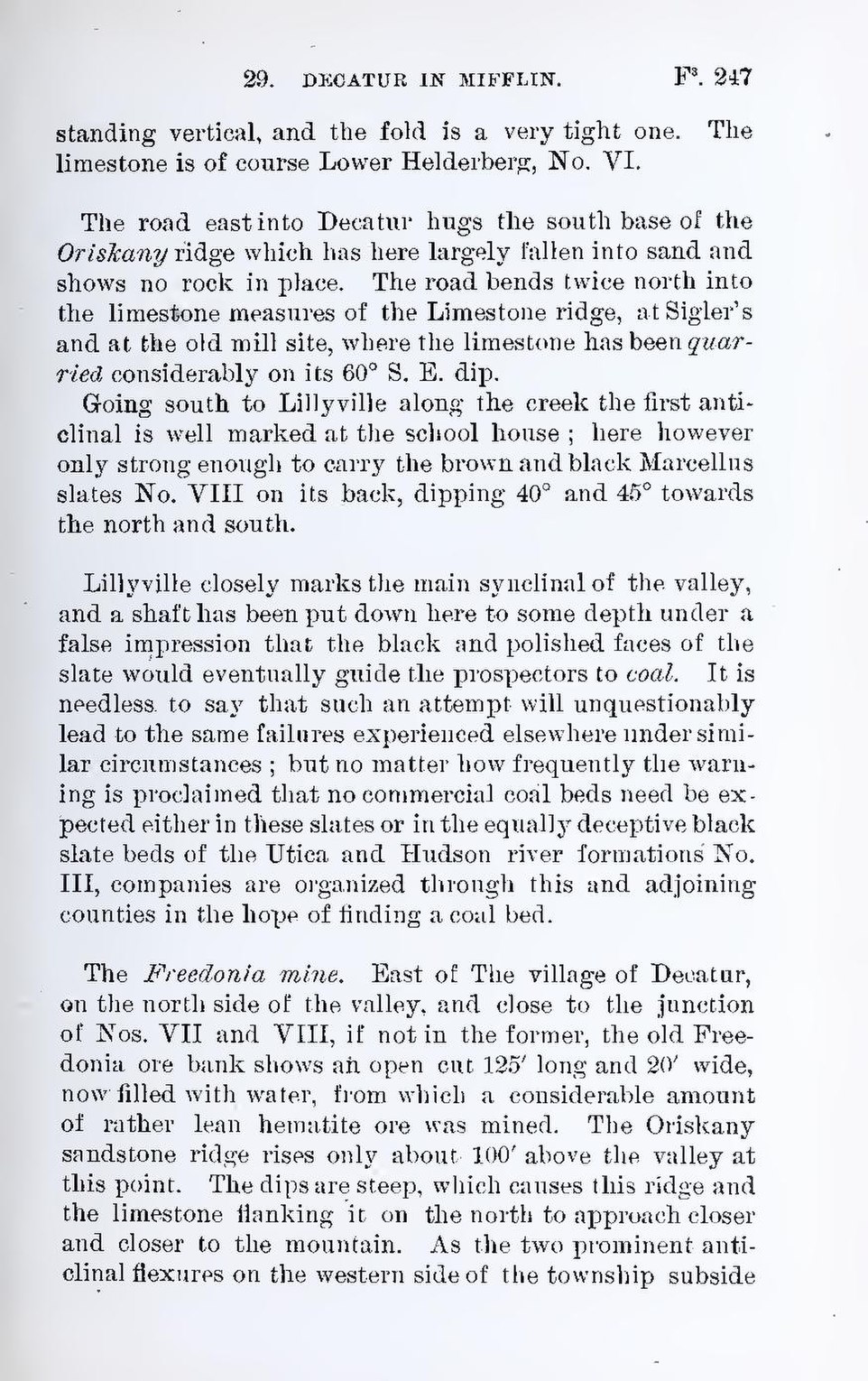standing vertical, and the fold is a very tight one. The limestone is of course Lower Helderberg, No. VI.
The road east into Decatur hugs the south base of the Oriskany ridge which has here largely fallen into sand and shows no rock in place. The road bends twice north into the limestone measures of the Limestone ridge, at Sigler’s and at the old mill site, where the limestone has been quarried considerably on its 60° S. E. dip.
Going south to Lillyville along the creek the first anticlinal is well marked at the school house; here however only strong enough to carry the brown and black Marcellus slates No. VIII on its back, dipping 40° and 45° towards the north and south.
Lillyville closely marks the main synclinal of the valley, and a shaft has been put down here to some depth under a false impression that the black and polished faces of the slate would eventually guide the prospectors to coal. It is needless to say that such an attempt will unquestionably lead to the same failures experienced elsewhere under similar circumstances; but no matter how frequently the warning is proclaimed that no commercial coal beds need be expected either in these slates or in the equally deceptive black slate beds of the Utica and Hudson river formations No. III, companies are organized through this and adjoining counties in the hope of finding a coal bed.
The Freedonia mine. East of The village of Decatur, on the north side of the valley, and close to the junction of Nos. VII and VIII, if not in the former, the old Freedonia ore bank shows an open cut 125′ long and 20′ wide, now filled with water, from which a considerable amount of rather lean hematite ore was mined. The Oriskany sandstone ridge rises only about 100′ above the valley at this point. The dips are steep, which causes this ridge and the limestone flanking it on the north to approach closer and closer to the mountain. As the two prominent anticlinal flexures on the western side of the township subside
